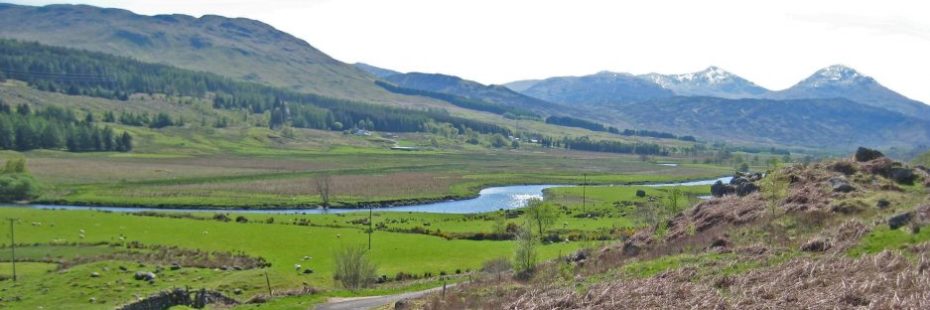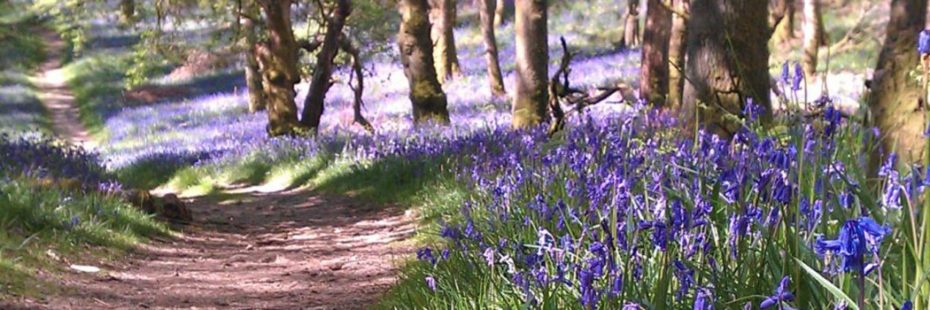
Conservation Outcome C1:
The Park’s natural resources are enhanced for future generations: important habitats are restored and better connected on a landscape scale.
Why is this outcome important?
The stunning and varied wildlife and landscapes found in the National Park attract people from around the world to visit, live and work in this special part of Scotland. The living ecosystems of the area provide vital stocks of natural capital, from which flow benefits from nature such as water, timber, energy, food, recreation and enjoyment.
21% of the Park is designated for its special nature conservation value and the area also holds strategically important populations of species, such as Atlantic salmon, golden eagle and red squirrel; and habitats of high biodiversity value, like native oakwoods and peatlands. Conserving and enhancing our natural heritage is a primary aim of Scotland’s National Parks. Wildlife species are an integral part of the natural environment and people’s connection with it.
Our woodlands habitats
The commercial forests and native woodlands in the Park are of national importance both in terms of timber production and their rich biodiversity. They also play an important role in mitigating climate change by storing large amounts of carbon which is estimated to be 2,505,000 tonnes and slowing water flow, which can help mitigate flooding and stabilising slopes prone to landslides.
Woodland cover is already extensive in some areas of the Park, such as the Trossachs and Cowal, but much less so in upland areas, such as Breadalbane. Opportunities do exist to increase all the benefits that woodlands bring by creating more extensive and better connected forest and woodland networks.
Our wetlands habitats
The varied lochs, rivers, burns and peatlands not only contribute to the beauty and natural wealth of the region, but also provide drinking water, renewable energy production, livelihoods and recreational opportunities for hundreds of thousands of people. In a rapidly changing climate the health of these wetlands is essential. The restoration and enhancement of degraded waterbodies and peatlands, in order to aid their water and carbon storage natural functions, are highly important and as a major source of drinking water and hydro-electricity generation.

Looking east along Glen Dochart
The coasts and narrow sea lochs of the Park lie close to the mouth of the Firth of Clyde and are integral to the rich history and heritage of the region. Rich coastal and marine wildlife, combined with tranquil, secluded seascapes make this a popular area for low key marine tourism and a gateway area to the internationally renowned west coast and islands.
Our priorities for action:
Conservation Priority 1 – Habitats
We will work with others to deliver multiple benefits from nature including natural flood management, carbon storage, and sustainable timber and food production. Specific habitats for focus include:
- Woodlands – The Park Authority’s priority will be supporting land managers with advice and resources to target areas of sparse woodland cover and help restore native upland woodland and scrub habitats, particularly along hillside burns, and also waterside woodlands on the banks of rivers, burns and lochs in the glens of the Park.
- Wetlands – Working with partners, the Park Authority’s priority and focus will be on supporting the restoration of naturally-functioning river and loch systems. This will be done by taking a catchment-by-catchment approach to tackling diffuse pollution and improving water quality, flows and wetland habitat, and encouraging natural flood management solutions, as demonstrated by projects such as the Strathard Landscape Initiative.

Inchcailloch Woodland
Conservation Priority 2 – Species
Whilst the Park Authority’s main focus will first and foremost be on the wider health of ecosystems and habitats which support species, it will also support targeted work on key species whose conservation status is in decline or at risk, with a focus on:
- Tackling and reducing the impacts of invasive non-native species such as Rhododendron ponticum, Himalayan balsam, and Grey squirrel in a strategic, water-catchment based approach.
- ‘Flagship’ species that are indicators of natural health and representative of key, threatened habitats in the Park. These species are a focus to help engage people with the natural environment and the benefits it brings. Examples will include WildPark 2020 action species Red squirrel (woodland flagship species), Black grouse (upland flagship species), Brown trout (freshwater flagship species) and Gannet (marine flagship species).
Who can help make this happen?
| LEAD DELIVERY PARTNERS INCLUDE: |
| Scottish Natural Heritage |
| Forestry Commission Scotland |
| Scottish Environment Protection Agency (SEPA) |
| Scottish Government Rural Payments and Inspections Division (RPID) |
| Scottish Land and Estates |
| Fisheries Trusts |
| Loch Lomond & The Trossachs Countryside Trust |
| Deer Management Groups |
| SUPPORT DELIVERY PARTNERS: |
| Private Land Managers |
| Local Authorities |
| National Farmers Union of Scotland |
| Royal Society for the Protection of Birds |
| Scottish Wildlife Trust |
| National Trust for Scotland |
| Confederation of Forest Industries |
| Marine Scotland |
| Transport Scotland |
| Clyde Marine Planning Partnership |
| Woodland Trust Scotland |
| Scottish Water |
| The Great Trossachs Forest |
How will we measure success by 2023?
- Natural Heritage – The percentage of designated site features in favourable condition.
- Species – The status of invasive non-native species and flagship species.
- Land management – The percentage of land under agri-environment/woodland schemes, whole farm/estate plans and/or management partnerships (e.g. Deer Management Groups).
- Water – The percentage of water bodies achieving good ecological condition.
- Carbon – The percentage of land under woodland and the percentage of restored peatland.
Questions
|

